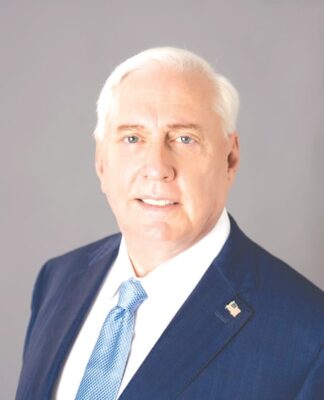Will Japan skirt constitutional ban to raise an army?
Japan, which has committed itself to non-violence officially since WWII, might turn away from its pacifist stance as Russian, Chinese belligerence mounts tensions across the Pacific region.
Japan has long been a model country, preferring economic growth over national security, eliciting praise from different parts of the world for its choice to have a non-military status since WWII and growing into the world’s second biggest economy from 1968 until 2010 when China overtook the islands-nation.
But the Japanese model is in danger as escalating tension with China and Russia across the Pacific region is pushing Tokyo to change its pacifist stance and to develop “counter-attack capabilities”, something the country’s constitution strictly bans.
“Aspiring sincerely to an international peace based on justice and order, the Japanese people forever renounce war as a sovereign right of the nation and the threat or use of force as means of settling international disputes,” says the Japanese constitution’s famous Article 9.
“In order to accomplish the aim of the preceding paragraph, land, sea, and air forces, as well as other war potential, will never be maintained. The right of belligerency of the state will not be recognised,” the article adds.
Despite the constitutional ban, which was imposed by American occupation forces following WWII, when Japan faced atomic bombs from the US, the Pacific state built a de facto army in 1954 during the Korean War. Since WWII, Japan has been a US ally, which has backed the country’s military development against anti-NATO forces.
Under US protection, the Japanese Self Defence Force (SDF) has gradually become a powerful army, which was ranked the fifth strongest military force across the world last year. Japanese defence spending has also significantly increased, ranking sixth globally among 140 countries, according to military rating institutions.
In October, Japanese Prime Minister Fumio Kishida further signalled that Tokyo might consider “all options” which included pre-emptive strike capabilities to enhance the country’s “defence power”. That’s a remarkable statement for a country which avoids even using the word ‘military’ to describe its defence forces.
Japan, which hosts around 50,000 US troops, the biggest American overseas military presence, is geographically surrounded by rival countries like China, North Korea and Russia.
Will Japan renounce its pacifist stance?
Japan faces increasing pressure from both China and Russia, whose maritime areas neighbour Japan. Beijing also has territorial disagreements with Japan, like the Senkaku islands dispute across the South China Sea. But changing Tokyo’s pacifist stance is a controversial issue in the Pacific nation.

“Popular public opinion still views Japan as a pacifist country that shouldn’t have the ability to attack others, it should only have sufficient means in order to defend itself,” says James Brown, an expert on international relations at Temple University.
According to Brown, the Japanese public’s insistence on military pacifism has made Tokyo hesitant to change its official stance, moving “slowly” on the militarisation path.
But in 2014, despite public opposition, in order to manoeuvre the constitutional ban of building a military, the Japanese government accepted a new interpretation of Article 9, which allowed them to cooperate and defend the country’s allies in case of war. The next year, the Japanese parliament also passed laws to reinforce the government’s new interpretation.
However, opposition parties and many citizens have thought all these changes go against Article 9.
In 2019, former Prime Minister Shinzo Abe, a fierce defender of Japan’s militarisation, wanted to change Tokyo’s pacifist constitution to allow the country to officially have an army. But a majority of the Japanese public opposed his amendment, according to a poll at the time.
The same year also saw pro-military amendment forces lose crucial seats in the country’s parliament following the election, denying them the chance to change the constitution.

However, in recent months, growing tension and conflicts in different parts of the world—from the Ukraine conflict to increasing China-Russia pressure in the Pacific over Tokyo — appeared to have changed the Japanese mood over the militarisation plan. A recent survey indicated that 64 percent of the poll’s respondents favoured increasing Japanese military capabilities, showing the country’s shifting attitudes.
“Japan wants to be able to stand up for itself in a fight. The country has a very strong section of the population who don’t want to be reliant on outside powers in order to be able to make decisions that might or may not risk its sovereignty,” says Cleo Paskal, an expert on the Indo-Pacific region.
Shifting attitudes
The Japanese public’s shifting attitude is significant for a country where the painful wounds and memories of WWII are still raw. But it also has a geopolitical reasoning as Japan has seen more confrontational behaviour from both Russia and China, the two anti-Western allies, in recent years.
In October, a joint fleet of Chinese and Russian warships circled Japan during a trip towards the East China Sea. In April, their fighter jets also flew close to Japan’s airspace in a show of force, forcing Tokyo to scramble its warplanes.
But Japan’s slow militarisation and its growing military ties with the Western alliance through organisations like the QUAD is also pushing China and Russia to put more pressure on Tokyo.
The two anti-Western countries are carefully monitoring the emergence of AUKUS, a trilateral security pact between Australia, the UK and the US to sell nuclear submarines to Sydney to put more pressure on China across the Pacific.
The Quad or the Quadrilateral Security Dialogue, which includes the US, Australia, Japan and India, was formed in 2007. But it became an effective force in 2017 in an attempt to limit China’s expansion across the Pacific region. The real intellectual force behind Quad was Japan’s Abe, who worked intensively to bring the four countries to oppose China’s growing global presence and its regional clout across the Pacific.
Last week, during US President Joe Biden’s visit to the Pacific region, Quad countries came together in Tokyo in a show of solidarity against the China-Russia alliance. Beijing responded to strengthening Japan-West rapprochement harshly, saying that it had already created “a foul atmosphere”.
Biden’s Asia trip has been marked with the president’s another problematic statement. He suggested that Washington would militarily defend Taiwan if Beijing intervened in the Asian country, which China regards as “a renegade province”, as Russia has done to Ukraine.
In January, prior to Russia’s February attack on Ukraine, Australia and Japan also signed the Reciprocal Access Agreement (RAA), which allows both states to conduct military exercises in the territory of the other country without permission, indicating both countries’ growing alliance against China.
































